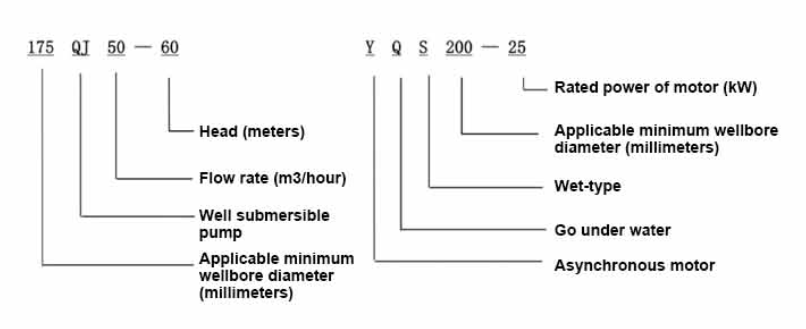Oct . 22, 2024 06:48 Back to list
Guide to Replacing Submersible Well Pumps for Optimal Performance and Efficiency
Understanding Submersible Well Pump Replacement A Comprehensive Guide
Submersible well pumps are a vital component in many water systems, especially in rural or agricultural settings. These pumps are installed underwater within a well and are designed to push water to the surface. However, like any mechanical device, they have a finite lifespan and may need to be replaced after years of service. In this article, we'll explore the key considerations for submersible well pump replacement, ensuring that you make an informed decision.
When to Replace Your Submersible Well Pump
The first step in the replacement process is recognizing when your submersible well pump needs to be replaced. Here are a few signs that indicate it may be time for a replacement
1. Decreased Water Flow If you notice a significant drop in water output or pressure, it may be a sign that the pump is failing. This could be due to wear and tear, clogging, or obstructions in the well.
2. Strange Noises Unusual sounds such as grinding, rattling, or humming may indicate mechanical issues within the pump, suggesting it could be nearing the end of its life.
3. Electrical Problems Frequent tripping of circuit breakers or flickering lights may indicate that the pump is using more power than necessary, a sign of inefficiency or internal failure.
4. Increased Energy Bills A sudden spike in your utility bills can be attributed to an inefficient pump working harder than it should, often due to aging components or leaks.
5. Age of the Pump Typically, a submersible well pump lasts around 8 to 15 years. If your pump is approaching or has surpassed this timeframe, consider a proactive replacement.
Selecting the Right Replacement Pump
submersible well pump replacement

Should you determine that a replacement is necessary, the next step is to choose the right pump for your needs. Here are some factors to consider
1. Pump Size and Capacity The new pump should match the flow rate and pressure specifications of your water system. Make sure to calculate the flow required based on household needs or agricultural demands.
2. Type of Pump Submersible pumps come in various designs and materials. Choose a pump that suits the depth of your well and the quality of the water. For example, stainless steel pumps may be better suited for corrosive water environments.
3. Efficiency Ratings Look for Energy Star ratings or other efficiency credentials. A more efficient pump not only conserves energy but can also lead to lower operating costs over time.
4. Durability Consider pumps with a proven track record for longevity and reliability. Reading reviews and seeking recommendations from professionals can guide your choice.
5. Installation Costs Factor in the costs associated with the installation of the new pump. Professional installation is recommended as it ensures safety and correct setup, which might save you from future issues.
Professional Help
While some homeowners may feel comfortable replacing a submersible well pump themselves, it is usually advisable to hire a licensed professional. Experienced technicians will possess the knowledge and tools necessary for safe and efficient installation, diagnosing any potential issues before they escalate.
Conclusion
Replacing a submersible well pump doesn’t have to be a daunting task. By staying vigilant about the performance of your current pump and adhering to best practices in replacement, you can ensure a consistent and reliable water supply for your home or farm. Understand your options, consult with professionals, and take the necessary steps to maintain your water system’s efficiency and functionality for years to come.
-
Submersible Water Pump: The Efficient 'Power Pioneer' of the Underwater World
NewsJul.01,2025
-
Submersible Pond Pump: The Hidden Guardian of Water Landscape Ecology
NewsJul.01,2025
-
Stainless Well Pump: A Reliable and Durable Pumping Main Force
NewsJul.01,2025
-
Stainless Steel Submersible Pump: An Efficient and Versatile Tool for Underwater Operations
NewsJul.01,2025
-
Deep Well Submersible Pump: An Efficient 'Sucker' of Groundwater Sources
NewsJul.01,2025
-
Deep Water Well Pump: An Efficient 'Sucker' of Groundwater Sources
NewsJul.01,2025
-
 Submersible Water Pump: The Efficient 'Power Pioneer' of the Underwater WorldIn the field of hydraulic equipment, the Submersible Water Pump has become the core equipment for underwater operations and water resource transportation due to its unique design and excellent performance.Detail
Submersible Water Pump: The Efficient 'Power Pioneer' of the Underwater WorldIn the field of hydraulic equipment, the Submersible Water Pump has become the core equipment for underwater operations and water resource transportation due to its unique design and excellent performance.Detail -
 Submersible Pond Pump: The Hidden Guardian of Water Landscape EcologyIn courtyard landscapes, ecological ponds, and even small-scale water conservancy projects, there is a silent yet indispensable equipment - the Submersible Pond Pump.Detail
Submersible Pond Pump: The Hidden Guardian of Water Landscape EcologyIn courtyard landscapes, ecological ponds, and even small-scale water conservancy projects, there is a silent yet indispensable equipment - the Submersible Pond Pump.Detail -
 Stainless Well Pump: A Reliable and Durable Pumping Main ForceIn the field of water resource transportation, Stainless Well Pump has become the core equipment for various pumping scenarios with its excellent performance and reliable quality.Detail
Stainless Well Pump: A Reliable and Durable Pumping Main ForceIn the field of water resource transportation, Stainless Well Pump has become the core equipment for various pumping scenarios with its excellent performance and reliable quality.Detail
